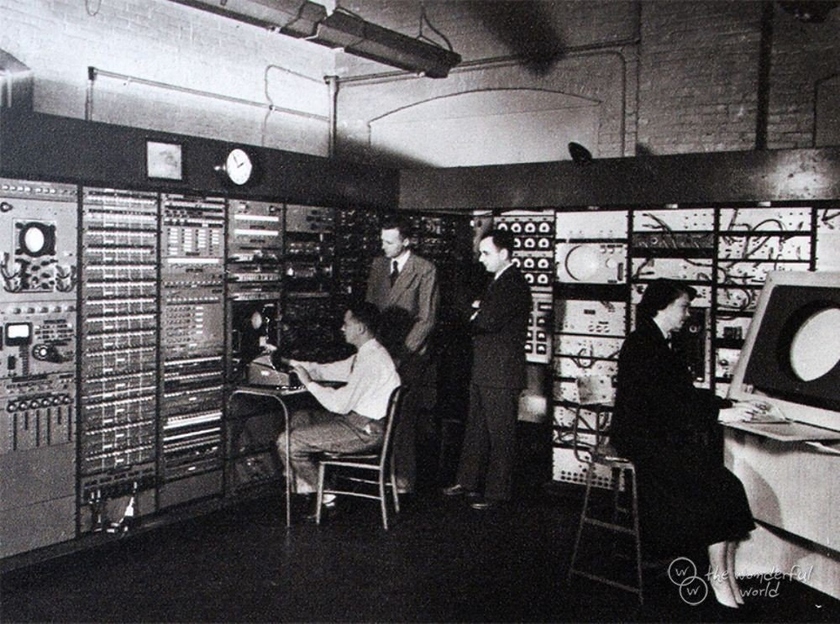THE BIRTH OF THE INTERNET
In the 1970s the US was in the midst of a Cold War, and the US department of defense needed a way to quickly send information between computers in case of an attack. They chose the Advanced Research Projects Agency for the job, a group that would eventually build the foundation for the internet today. Their network, ARPANET, operated off a new form of communication called packet switching, which worked similarly to circuit switching for phone lines. However, instead of each computer having its own wire, they would be on the same set of wires. This got rid of the need to manually switch lines to deliver a message. A packet switching network sends data in packets, which include parts of data and the address of the destination. The other computers along the path send the packets to the destination, where they are reassembled. While packet switching allowed for much more efficient data transfer, it meant that every computer had to keep a list of all other computers addresses. This led to many issues, because the lists were always changing and most people didn’t keep their copies updated. To add to the confusion, the other networks popping up around the world all formatted their packets differently, so figuring out where to send data was very difficult. This led to the creation of the Technical Control Protocol, a new standard that we still use today. It tells every computer exactly how to format their packets.
But the confusion didn’t end there. Nowadays when you send an email, it magically finds its way to the recipient. However, in the internet’s early days the sender had to map out a message’s entire path. Keeping updated maps of networks was only becoming more difficult, and the system needed a change. That change came with the creation of the Domain Name System, which organized different addresses into domains (like dot com, dot edu, dot org, etc). ARPANET then created computers for each domain tasked with storing the addresses within it and mapping out the networks. Now, rather than senders creating a path themselves, the DNS figured out what path packets had to take to reach their destination.
The internet saw major development under the management of ARPANET, but it still had a long way to go before it got to where it is today. By far the most obvious difference was that there wasn’t a single website. That was, until a major change was made that would alter the internet forever: the World Wide Web.

The ARPANET lab where the first successful data transmission between two computers was sent.


.png)



